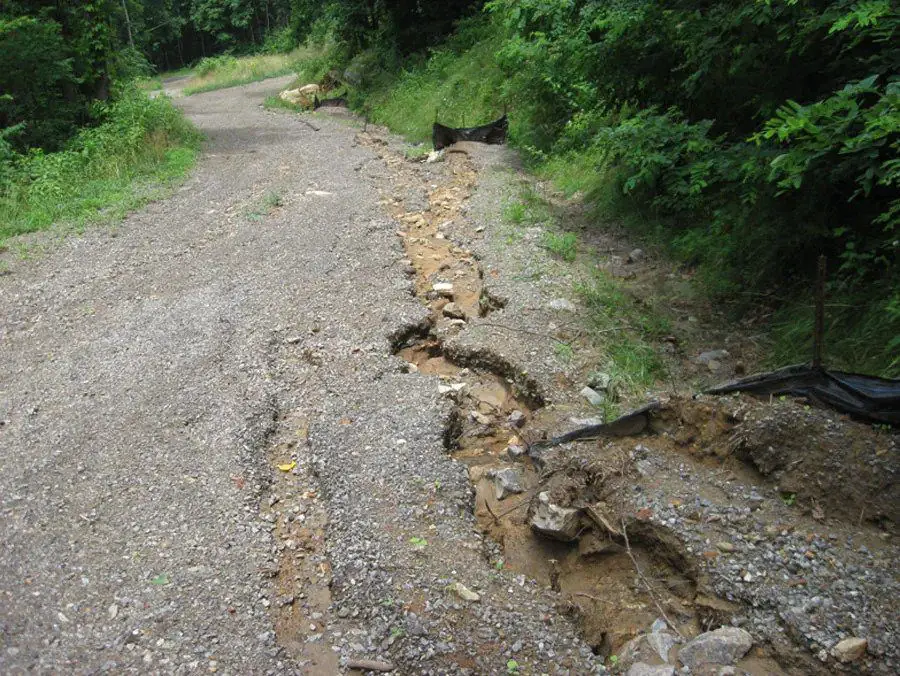Transported soil refers to weathered soil deposits that are moved from one position to another by glaciers, wind, and other natural forces.
There are three types of soil that are categorized by mode of transport: soils transported by wind, soils deposited by water, and soils deposited by glaciers.
In this article you’ll learn:
What is Transported Soil?
The term “transported soil” indicates the dirt that has been moved from one place to another.
The way the dirt is carried and deposited has a big impact on how it behaves.
Dunes were also created by wind-transported soils (dunes are the sand deposits made by the wind on the desert’s beaches).
Purpose of Transported Soils:
- Adding different types of soil to the original ground when building engineering foundations affects many properties of the surrounding soil like permeability, more uniform internal pressure distribution.
- It also reduces the susceptibility to washing away by underground waterflow, more coherence, and even greater resistance to pressure which improve soil behaviour as support for engineering, architectural, or urban groundwork.

Types of Transported Soil:
1. Water Transported Soils:
The main transporters of soil deposits are water.
The amount of soil deposits carried by the river is determined by its speed.
Water moving at a rapid rate has the power to erode hills and deposit debris in valleys.
Large amounts of soil (coarse and fine) can be carried by high-velocity water by rolling or suspending it.
The coarser particles are deposited as the velocity drops.
At the receiving body of calm water, a delta forms when the velocity practically reaches zero.
Alluvial deposits are the soils that water carries and deposits and lacustrine deposits are those that have formed in the lake.
These soil deposits are referred as marine deposits when they are transported to the ocean or sea.
2. Wind-Transported Soils:
Aeolian deposits refer to soil that has been carried by the wind; the size of the particles transported depends on the wind’s velocity.
Large sand dunes are created by wind in desert areas on the leeward side of the sea.
Loess is a kind of sediment that the wind carries away.
This soil is highly compressible and has a low density; there is not enough bearing capability in this soil.
3. Glacier Transported soils:
Large glaciers transported soil of varied sizes to enormous boulders as they advance.
The soil is carried over great distances by the glacier and mixed with it.
Drifts are the deposits that glaciers make, either directly or indirectly.
The term “till” is used to describe the soil deposits that come from glacier melting.
Glaciofluvial refers to the deposits created by glaciers.
These soil deposits are the result of melting water that are stratified.
These glacial till deposits have a strong shear strength and may be compressed to an appropriate dry density.
4. Gravity-Transported Soils:
Gravity has the ability to move and deposit soil. In this situation, the movement might just be a few millimetres.
Something moves when gravitational force is present and the slope is steep.
Gravitational forces are responsible for the deposition of the talus, a form of colluvial soil.
It contains high-quality, coarse-grained particles and rock fragments that are in great demand for engineering projects.
5. Soil Transported by Combined Agents:
Additionally, two or more agents are capable of moving soil.
For instance, wind-deposited soil may slide down a hill due to gravity.
Water might pick up this deposit and drop it off somewhere else.
Advantages of Transported Soils:
- Due to the minerals from different transported rocks, the soils in this region are exceptionally fertile.
- Also, it is extremely compressible.
Disadvantages of Transported Soils:
- The density of this type of soil is low.
- Additionally, it lacks enough bearing capability.
- The parent rock that held the transported material is blown or washed away.
Also read: Soil Excavation Tools | Residual Soil | Soil Classification
Conclusion:
Rocks weathering creates soil that is the outermost layer of the earth’s crust.
The transported soil is created in one place and moved to another place naturally as a result of elements like wind, water, rain, melting snow, etc.

Related Posts
Rock Quality Designation(RQD): Building Strong Foundations
Spread Footing
Masonry Cement
Plain Cement Concrete
Concrete Efflorescence
Concrete Pile
Stepped Footing
Fineness Modulus of Coarse Aggregates
Difference between Condo and Apartment